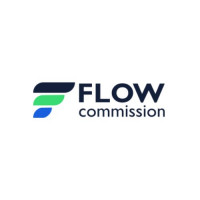10 Best Practices for Automated Commission Tracking

Strong 8k brings an ultra-HD IPTV experience to your living room and your pocket.
Commissions have a tremendous impact on motivation, clarity, and overall performance. As businesses grow, manual tracking of commissions becomes cumbersome and is prone to mistakes. Automated commission tracking is an improvement to make the process less stressful and more accurate. However, to get the most out of it, there are specific measures that businesses should take. Below are some best practices to consider when implementing automated commission tracking.
1. Clearly Define Commission Structures
Automated commission tracking cannot work well if there is a lack of clear structures on how commissions are paid and given out. This covers commissions like target sales, percentage commissions, and tiers. These guidelines help avoid confusion and conflicts between your sales team and guarantee that the software determines commissions according to defined rules.
2. Choose the Right Software
Commission tracking software is not created equal. When choosing a solution, criteria include usability, ability to interface with your current systems (such as your CRM or ERP systems), flexibility, and product support. For instance, the Flow Commission is a popular software with rich functionality and an easy-to-navigate interface, which makes it suitable for organizations of various sizes.
3. Maintain Data Accuracy and Integrity
Automated commission tracking has always been dependent on data received from different sources. The accuracy of the calculations also requires data integrity. The figures fed into the system such as sales, transactions, and employees’ records, should be frequently audited. Ensure compliance with checks and balances to detect any inequity and correct it immediately.
4. Customize Reports and Dashboards
Another benefit of commission tracking automation is the enhanced generation of reports and executive dashboards. Adapt these tools to offer information on total commissions earned and the per-performer sales and sales progression. Company-specific reports assist the managers in decision-making processes, while the sales team appreciates transparency, motivating them to work harder.
5. Automate Payment Processes
It is crucial to connect your payroll with the commission tracking system to enhance the efficiency of commission tracking. Disbursement of commissions can be made on time and free from manual errors through automation of the payment process. Such integration enhances the business climate and ensures the sales team stays productive.
6. Provide Regular Training
As sophisticated as the software may be, it is crucial to every once in a while to make sure that everybody in the team knows how to operate the software. Organize workshops to make the employees aware of the various characteristics of the software. Training available to the employees assists them in learning any new features that may exist or changes that have been made, thus enabling them to utilize the software optimally.
7. Manage Performance and Intervene
The idea of an automated commission tracking system must be maintained actively and not just set up and left to run. The performance should be checked often and changes made wherever necessary. Consult the sales team to determine any problems that might be present or any changes that you could make. This constant monitoring and slight adjustment ensures that the system attains maximum accuracy over time and becomes more efficient.
8. Ensure Compliance with Regulations
Commission tracking requires dealing with monetary aspects, therefore adherence to these requirements is crucial. Make sure your software complies with data protection laws like GDPR or CCPA. Use encryption and access control to protect data and ensure the organization meets legal standards.
9. Foster Transparency and Communication
It is important to remain transparent as it helps build trust within members of the sales team. Employ the software’s reporting functionality to present frequent reports on commission computation and payment. Provide structures through which the employees can freely air their concerns or questions regarding their commissions. Some of the benefits of transactional transparency include saving time by avoiding misunderstandings that could have been costly.
10. Evaluate ROI Regularly
Finally, always assess the return on investment (ROI) on the automated commission tracking software. This should involve quantifying factors like time saved, accuracy, and effects on overall sales. The calculation of the ROI assists in the justification of the investment and in determining other potential areas for optimization.
Final Thoughts
Commission management can be a tiresome affair but with automated commission tracking the business can greatly benefit. By doing so, the companies can get the most out of their systems, making them accurate, efficient, and transparent. Outlining clear commission structures and selecting the right software to increase transparency, each step matters for effectively implementing automated commission tracking.
These strategies are particularly relevant for medium and large businesses as they will help keep the sales team motivated, decrease paperwork, and increase performance. Bring automation to the forefront and prepare your company for continuous growth in the cutthroat sales industry.
You can Also Read:
The Assumptive Close: How To Seal More Deals
Entitlement Mentality: The Silent Killer Of Sales Success
Note: IndiBlogHub features both user-submitted and editorial content. We do not verify third-party contributions. Read our Disclaimer and Privacy Policyfor details.


